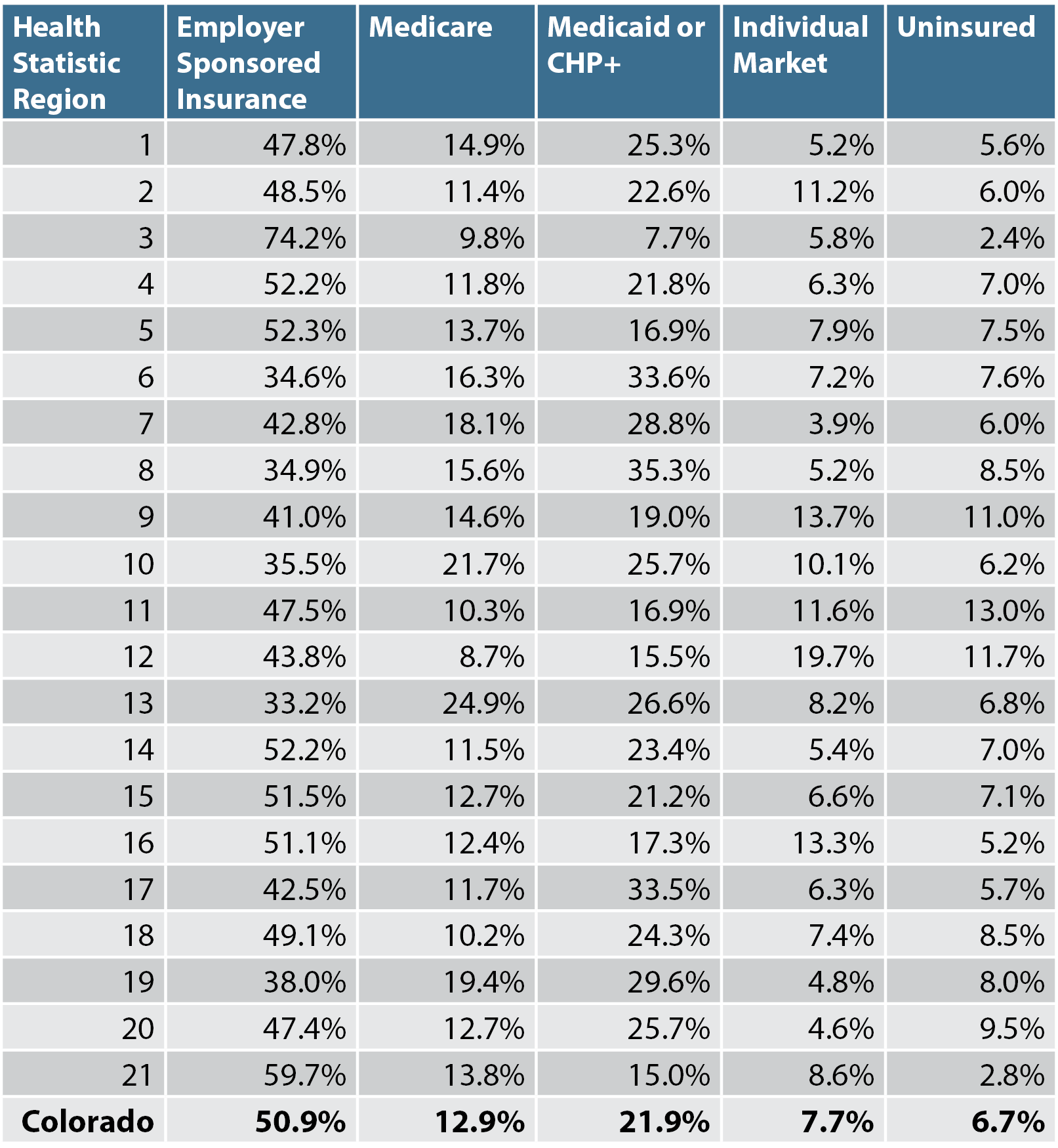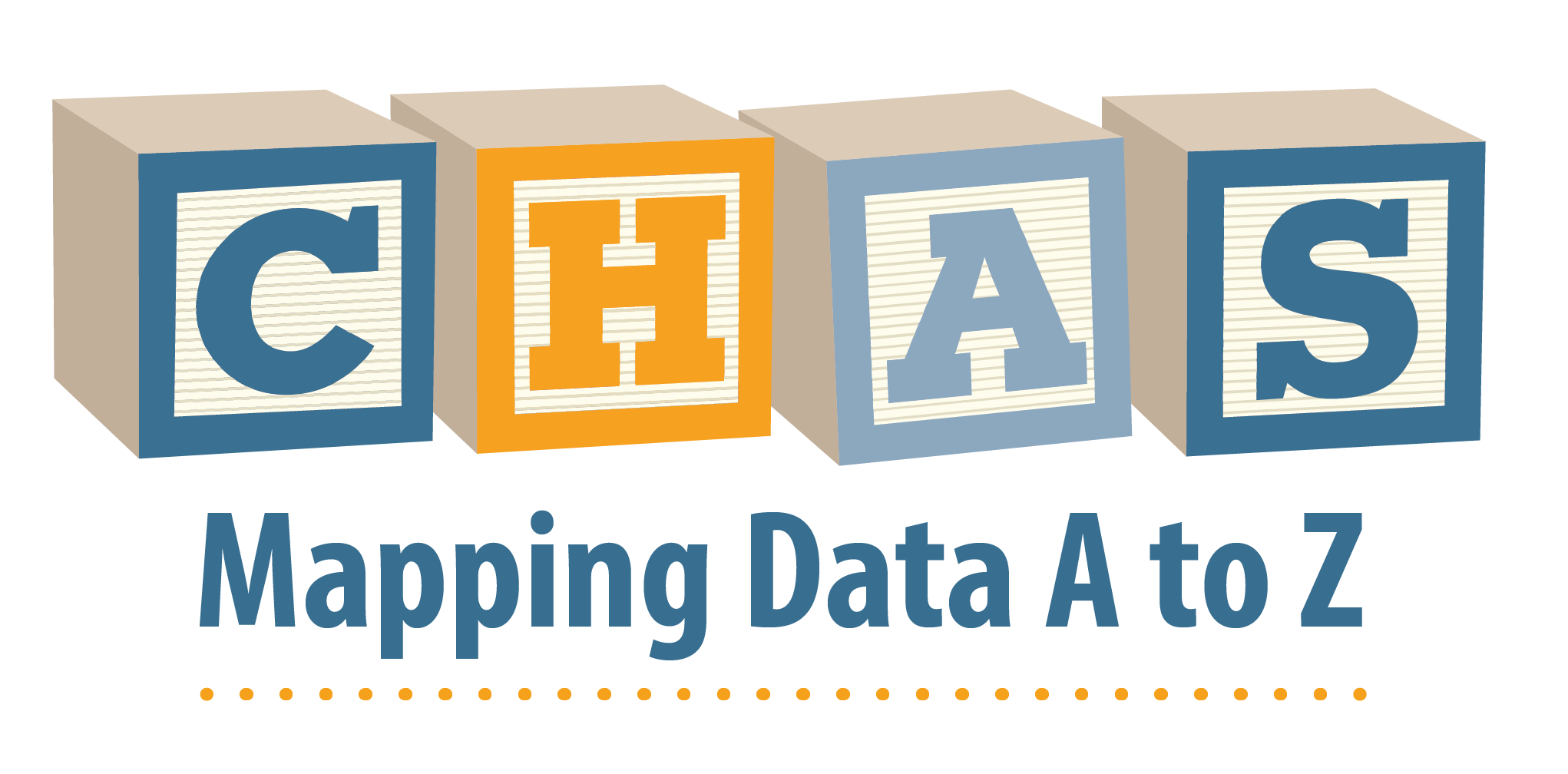

Where you live in Colorado often provides one clue to your type of insurance coverage — or your lack of coverage.
For example, the highest rate of employer-sponsored insurance is in Douglas County, where three of four residents get their health insurance through work. By contrast, the rural counties of Chaffee, Custer, Fremont and Lake (Health Statistics Region 13) in south-central Colorado have the lowest rate of employer-sponsored insurance at 33.2 percent.
In this case, the type of employment influences the type of insurance coverage
Data from the 2015 Colorado Health Access Survey provide other clues about how employment, demographic characteristics and other factors influence how residents get their health insurance.
Individual Market:
The mountain resort counties of Eagle, Summit, Pitkin, Grand and Garfield (Health Statistics Region 12) have the highest percentage of residents who gain their health insurance through the individual market. Nearly one of five (19.7 percent) residents purchase their own coverage through Connect for Health Colorado, the state-based insurance marketplace created as part of the Affordable Care Act, privately through a broker, or by contacting an insurer directly. This reflects the fact that many people in this area may be self-employed or work for employers who don’t offer coverage.
Mountain resort areas in northwestern and southwestern Colorado also rank among the state’s highest levels of individual insurance.
Pueblo County (Health Statistics Region 7) has the lowest rate of individual market coverage at 3.9 percent. But Pueblo County has a relatively high rate of residents covered by public insurance, including Medicaid, Medicare and Child Health Plan Plus (CHP+).
Employer-Sponsored Insurance:
While Douglas County leads the state in work-based health insurance, other Front Range counties also rank high. They include Jefferson County (Health Statistics Region 21) at 59.7 percent; Adams County (Health Statistics Region 14) at 52.2 percent; El Paso County (Health Statistics Region 4) at 52.2 percent; Arapahoe County (Health Statistics Region 15) at 51.5 percent; and Boulder and Broomfield counties (Health Statistics Region 16) at 51.1 percent.
Low levels of employer-sponsored insurance are found in more rural areas of the state — the southeastern counties of Baca, Bent, Crowley, Huerfano, Kiowa, Las Animas, Otero and Prowers (Health Statistics Region 6) at 34.6 percent; the Western Slope counties of Delta, Gunnison, Hinsdale, Montrose, Ouray and San Miguel (Health Statistics Region 10) at 35.5 percent; and Mesa County (Health Statistics Region 19) at 38.0 percent.
Medicare:
This public insurance program covers everyone beginning on their 65th birthday. The highest rate of Medicare coverage is in Chaffee, Custer, Fremont and Lake counties (Health Statistics Region 13), where one of four residents is a Medicare client. This makes sense because Custer County has the highest median age in the state at 55.3 years.
The lowest rate of Medicare is in the mountain resort counties of Eagle, Garfield, Grand, Pitkin and Summit (Health Statistics Region 12) at 8.7 percent. Weld County (Health Statistics Region 18), with the state’s lowest median age of 33.8 percent, also has a low rate of Medicare coverage at 10.2 percent.
Medicaid and CHP+:
Coloradans with the lowest incomes are eligible for this public insurance, which is jointly funded by the federal and state governments.
Southeastern Colorado (Health Statistics Region 6) has the highest rate of Medicaid and CHP+ coverage, with more than one of three (33.6 percent) residents covered by one of them. It is followed closely by the mountain counties of Clear Creek, Gilpin, Park and Teller (Health Statistics Region 17) west of metro Denver at 33.5 percent.
The lowest rate of Medicaid and CHP+ coverage is in Douglas County at 7.7 percent.
Uninsured:
The areas with the highest rates of uninsured residents are in northwest Colorado — Jackson, Moffat, Rio Blanco and Routt counties (Health Statistics Region 11) at 13 percent; Eagle, Garfield, Grand, Pitkin and Summit counties (Health Statistics Region 12) at 11.7 percent; and in the southwestern counties of Archuleta, Dolores, La Plata, Montezuma and San Juan (Health Statistics Region 9) at 11.0 percent.
The lowest level of uninsurance is in Douglas County (Health Statistics Region 3), where just 2.4 percent of residents are without health insurance.

